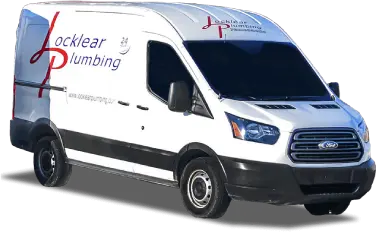
Most people tend to focus on their eating and exercise habits when trying to maintain a healthy lifestyle, but few consider the quality of water they are putting in their bodies.
August is National Wellness Month, so let’s turn our attention over to what’s in our water and what we can do to ensure we are getting the cleanest, and best-tasting water our bodies need.
It All Starts With Plumbing Services
Where to begin? Right inside our homes! If you have a home that predates the 1980s, it is more than likely that your pipes have corroded over time, leaking rust and lead into your useable water.
Over the course of history, plumbing technology has evolved. What was considered durable and inexpensive years ago, may have lead to aversive effects over the years as we realized that those materials weren’t as sustainable as previously thought. Without modern plumbing systems, the world would be a lot less safe and a lot more smelly.
Thanks to advances in modern plumbing, we can consume, filter, and dispose of waste and water in a safe and effective way. If your home is more than 30 years old, it is likely that the plumbing is made of galvanized steel or iron, which rusts and can lead to health issues. Newer homes are built with safer piping materials such as:
 Copper: The most popular type. Corrosion-resistant (although not corrosion-proof), lightweight and inexpensive as opposed to other metals.
Copper: The most popular type. Corrosion-resistant (although not corrosion-proof), lightweight and inexpensive as opposed to other metals.- CPVC: Corrosion-resistant at high temperatures, ideal for hot water. Also flexible and easy to fit into most spaces.
- PEX: Newest type of plastic piping being used. Although very similar to CPVC pipes, it is more flexible and doesn’t require elbow joints like the CPVC and copper pipes do. Installation is quick and requires less labor because parts don’t have to be soldered together.
What About Water Filters?
Replacing your homes entire pipe and plumbing system is very expensive, so most people opt for a water filtration system in the meantime. There are many things to consider when shopping for a new filtration system, like the biochemical properties of the water in your area, water pressure, pipe material, budget, personal taste, etc.
These factors vary from home to home, so here’s a breakdown of the types of filters that exist:

- Activated Carbon Filters – Traps large particles like sediment, silt, and chlorine in a carbon surface, allowing clean water to flow through. Found in most handheld pitchers and other filtration systems.
- Reverse Osmosis – Popular but expensive, mainly due to its effectiveness in removing heavy metals and harmful chemicals. It traps contaminants by filtering the water through small pores, and flushing away polluted water.
- Alkaline/Water Ionizers – Uses a process known as electrolysis where water passes over electrically charged plates and is separated into alkaline and acidic water. Water low in acid feels softer and is good for your health.
- UV Filters – Uses light of high frequency to irradiate water through glass, destroying any bacteria that can be damaging to your health. Does not need any chemicals or heat to work.
- Infrared Filters – Uses heat and light to soften water in hard water areas.
These filters come in all different sizes and pricing, but the most commonly bought are the fridge filter pitcher, the attachable faucet filter, showerhead filter, countertop filters, or under the sink filters.
Make Sure to Check for Water Leaks!
Water leaks don’t just come from your roof on a heavy downpour. The majority of leaks occur inside the home from faulty machinery, or even worse, inside your walls from faulty piping.
 Leaks cause a variety of safety issues, such as:
Leaks cause a variety of safety issues, such as:
- Deterioration of walls and panelling.
- Fostering of mold and mildew.
- Hard water effects.
When was the last time you checked your house for leaks? Old pipes and water pressure wear down pipes over time, so make sure to do routine checks of your appliances and fixtures.
Without modern plumbing, we’d still be flinging our waste out into moats. Can you imagine? With advances in technology comes the responsibility of maintenance – we need to make sure all the things that make our lives easier are working properly… so that they don’t make our lives harder.

